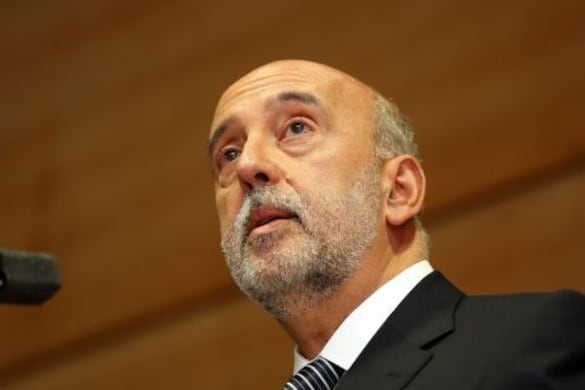Bank of Ireland said its new mortgage lending more than doubled in the Republic in the first quarter, amid its purchase of loans from KBC and less competition from nonbank lenders as they were squeezed by rising market interest rates.
That helped fuel a 33 per cent increase in new lending across its Retail Ireland division, the bank said in a trading update on Wednesday, which did not give euro amounts for the new lending. Green mortgages accounted for half of new home loans business in the Republic in the first quarter.
Bank of Ireland took over €8 billion of loans, mainly mortgages, and €1.8 billion of deposits from KBC Bank Ireland in the first quarter as the Belgian-owned lender retreated from the market. Industry-wide mortgage drawdowns grew by 14 per cent in value to €2.87 billion in the first quarter, according to Banking and Payments Federation Ireland data. Non-bank lenders, including ICS Mortgages and Finance Ireland, which had entered the owner-occupier market from 2018, became a less competitive force from the second quarter as they were forced to raise lending rates as their own market funding costs spiked in anticipation of central bank rate increases.
Permanent TSB, which has acquired a large part of Ulster Bank’s mortgage book, reported on Tuesday that its new mortgage lending grew by 69 per cent in the first quarter to €721 million.
RM Block
New lending across the Bank of Ireland group increased by 8 per cent in the first quarter, which also reflected a decline in UK and international corporate lending during the period. The bank’s UK loan book has been shrinking in recent years following a decision to retreat from mass-market mortgages there to more “bespoke” and higher-return home loans.
Net lending in Retail Ireland, which also factors in loan paybacks, increased by €300 million, though this was offset by a €400 million net reduction in UK and international corporate lending. Still, the overall result was helped by €200 million of positive currency translation and other effects, it said.
Bank of Ireland chief executive Myles O’Grady, who took charge of the group in November, said the group’s performance during the first quarter had been in line with its expectations.
“Notwithstanding recent international banking sector volatility to which we remain alert, our strong financial performance underpins our conviction in the delivery of our refreshed group strategy,” he said, in a nod to implosion in recent months of a string of US regional banks as well as the rescue of Credit Suisse.
Mr O’Grady hiked the group’s medium-term profitability target in March after it reported solid results for 2022 and proposing an increase in cash returns to shareholders through dividends and stock buy-backs.
The chief executive has set his sights on the bank posting profit returns between this year and 2025 equivalent to about 15 per cent of tangible equity that shareholders hold in the business. That is up from its previous 10 per cent objective and the 10.6 per cent out-turn for last year, excluding noncore costs.
The bank said its net interest income in the first quarter was tracking in line with guidance that it would expand by more than 12 per cent – lifted by higher European Central Bank (ECB) rates on its surplus deposits, the KBC loans purchase and the bank passing on some of the ECB rate increases to borrowers.
The ECB has raised its deposit rate from minus 0.5 per cent to 3 per cent since last July and is widely expected by analysts to add another 0.25 of a percentage point to the rate on Thursday.
Customer loans rose to €80.1 billion by the end of March from €72 billion in December, driven by the KBC deal.
Customer deposits rose by €2 billion to €101 billion over the period, reflecting the KBC transaction, continued growth in Retail Ireland deposits, partially offset by slightly lower corporate and markets as well as Retail UK deposit volumes, the bank said.




















